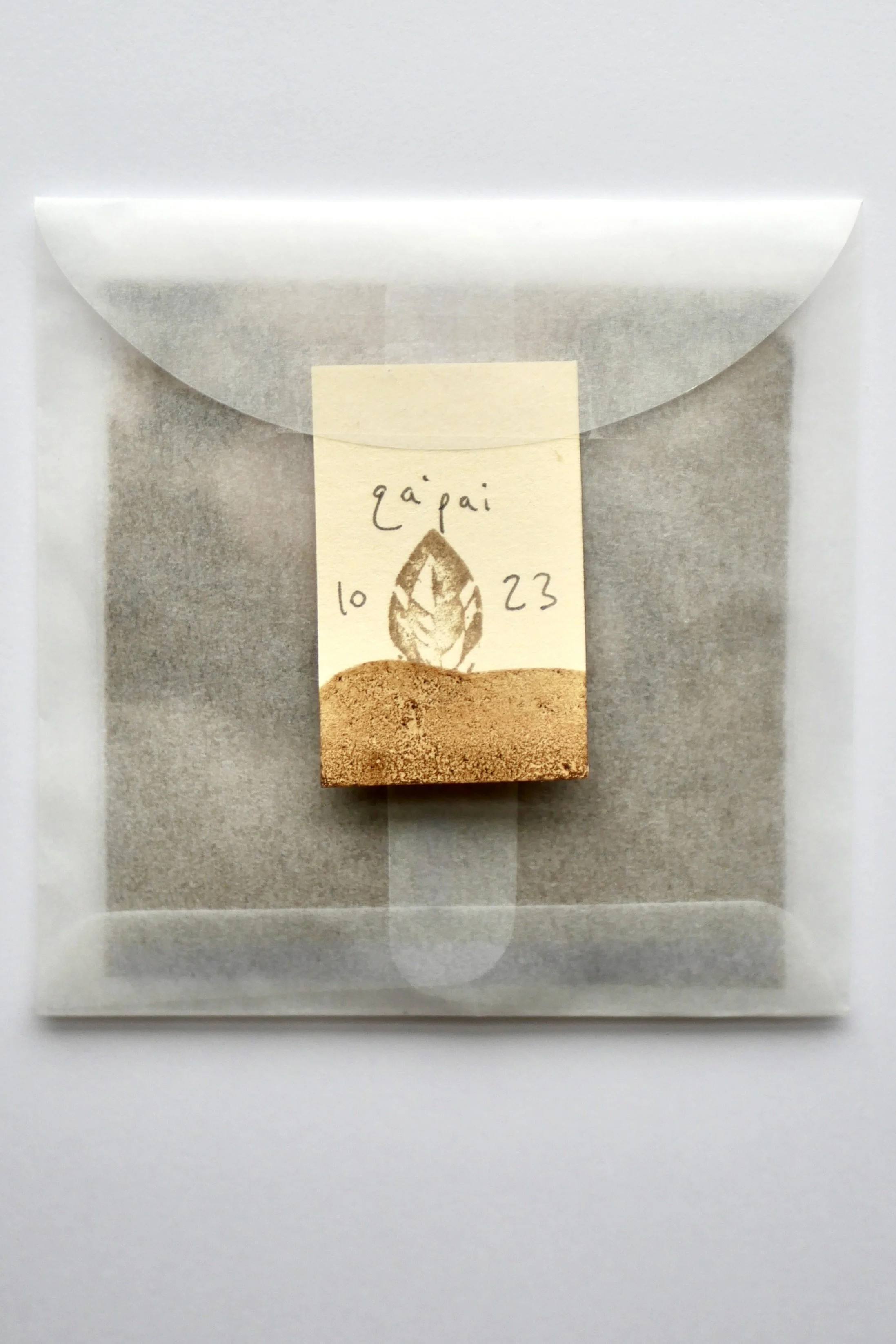qa’pai : october ’23
Tilke writes: “Qa’Pai is a Kalapuya word that means both “goodbye” and “hello”— a fitting name for a pigment unique to a season of decay and rebirth. Qa’Pai is a concentrated eastern black walnut (Juglans nigra) powder perfect for making a rich, dark brown ink. Artist and Wild Pigment Project founding director Tilke Elkins gathered the fallen black walnuts used to produce this pure black walnut hull powder in a park near her studio on Chifin Kalapuya lands, colonially known as Springfield, Oregon. The soft, squishy green-yellow husks were peeled from their nuts and left to dry in the autumn sun for several days, gradually turning a rich dark brown. They were then crushed by hand, blended to a fine powder and mixed with a small quantity of tree gum. The nuts were left for squirrels for their winter caches. The eastern black walnut tree was brought to the west coast by settler colonizer farmers.
contributor: Tilke Elkins
Tilke Elkins founded Wild Pigment Project in 2019 to foster conversations about the relationships between pigment foragers and land histories. The project has raised nearly 40K in funding for land stewardship and racial justice organizations and has a following of 50K on Instagram. Wild Pigment Project has gone through several transformations since it inception and is ever-evolving. Tilke Elkins is a painter and social practice artist whose current site-specific, ceremonial paintings exist in cycles of reciprocity with land and communities. You can find her work at www.tilkeelkins.com / www.wildpigmentproject.org.
Image from the Quartux Journal website.
Image courtesy of Noel Guetti.
22% donation recipient: The Quartux Journal & The Black Cultural Festival
The Quartux Journal: Critical, Indigenous Perspectives is an extensive online journal about Kalapuya culture, history and language, researched and written by David G. Lewis, PhD, a preeminent Kalapuyan historian. The journal features research gleaned from oral histories and hundreds of thousands of documents found in diverse museums. David is the owner of Ethnohistory Research, LLC, is the Tribal Historian/Cultural Archives and Exhibits Manager for the Confederated Tribes of Grand Ronde, and has provided consultation for many regional historical research projects. You can subscribe or donate to Quartux at www.ndnhistoryresearch.com.
The Black Cultural Festival writes: “The mission of the Black Cultural Festival is to cultivate a healthy and connected Black community in Eugene, Oregon and beyond by creating welcoming spaces that attract Black people, while also centering and celebrating our culture.” The event is marketed primarily to the Black community, features Black-owned businesses and other professional organizations that serve Black people, and aims to increase the retention of Black individuals in the local community. The festival originated as a response to white festival culture in the Eugene area (Beloved, the Oregon Country Fair, and others), as an effort to create places where Black people could feel comfortable. Founder Talicia Brown-Crowell established the festival to ‘craft creative ways to combat and push back against the lasting legacy of the KKK, which still predominates’ in Eugene , Oregon. www.blackculturalfestival.com.





